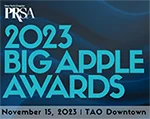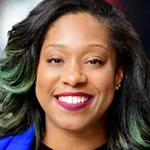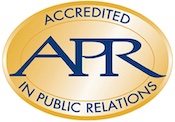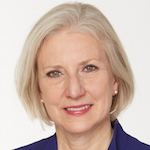Seven people representing PR firms, media and a digital communications firm will argue Sept. 8 whether "PR people practice deception." What this "mock trial" needs is a dose of reality, plus exhibits.
Since reporters except Paul Holmes of The Holmes Report, who is one of the panelists, are banned from attending this event, we are e-mailing to PRSA New York chapter president Henry Feintuch and some of the panelists (not all can be reached) materials that can serve as grist for this mill.
Bulletin: Feintuch this a.m. said the chapter's executive committee has changed its mind and will allow reporters at the event to audit it and take pictures but not speak during the program. Reporters will be able to talk to the panelists during the cocktail reception and after the program.
A trial needs exhibits. The panelists, if they are to do a good job, need to absorb as much as they can about this subject between now and next Monday.
 |
At issue is whether the event is a genuine exploration of the subject or whether it is a phony. Barring the press, should that policy hold, will tarnish all who participate including the five sponsors—Cision, PR Newswire, Factiva database of Dow Jones, Brandpoint, RCM Broadcast Communications and D S Simon Productions.
PR's Swamp Journalists
PR people, as of the 2013 stats of the Dept. of Labor, outnumber reporters by a 4.6/1 ratio—202,530 to 43,630.
Whether PR people can be trusted with the information they provide to reporters is an issue for the outgunned journalists.
A basic inequity we see is that contact points for journalists are mostly available while those for PR people often are not.
Cision, for example, has detailed contact points on hundreds of thousands of editors. They are grouped by type of media, subject matter, titles, geography and in many other ways .
This makes it easy for PR people to send materials to them electronically or physically via the mails or services such as FedEx or UPS. Dossiers are often available on editors including areas of special interest, political leanings, and possible biases.
Cision, which had a loss of $41 million in 2013, was merged in June with Vocus, a similar company that had a loss of $21.8 million, after both were acquired by GTCR's Grand Canyon Holdings of Chicago, which paid $446.5 million for Vocus. Annual revenues were about $180M while Cision's were $156M in 2012.
Peter Granat, who was CEO of Cision, became CEO of Vocus and president of Grand Canyon.
Mark Anderson, GTCR managing director, said the merger of Vocus and Cision "will enable us to capitalize on the significant growth opportunities in the PR and marketing software industry."
PR Blocks Membership Lists
Membership directories of major PR groups were available until about ten years ago. The directory of PRSA listed 19,000 members by company, geographically as well as by name, providing phone numbers, e-mails and faxes.
The Society, in the early 2000's, sent free copies to the major media and handed out copies to any reporters who wanted them. It was a major resource for the reporters. Publication stopped after the 2005 edition and only members can now access that database.
Similar directories were available from the Int'l Assn. of Business Communicators (14,000 members) and the National Investor Relations Institute (4,000). Only members can now access such lists which are online-only.
Membership lists of the Arthur W. Page Society, about 400 senior level PR people, were always only available to members.
Reporters trying to contact major companies often run into a phalanx of PR people who are under tight restrictions on what information they can give out, as noted by New York Times columnist Dave Carr.
Common practice is for company websites to display a box where reporters, after fully identifying themselves, can post questions. Names of PR people are often not provided.
One issue that should be explored is what can be done to level the contact playing field for journalists and PR people.
An obvious answer would be to let any journalist join the PR Society who wants to or simply give all the major media access codes to the 21,000 members.
IABC allows journalists to join but they have to pay full membership fees which are $328 for a New York member. IABC could comp major media.
Media Should Be Invited
The "Mock Trial" of PR will be available via the web in real time, says Feintuch, with SUNY providing the feed. Questions can be posed via Twitter, he said. Details of how the event can be accessed are to be announced.
The chapter, the national Society and PR itself can save itself from a black eye by inviting reporters to attend this event including those from NYT, New York Post, New York Observer, ProPublica, Gawker, Buzzfeed, Investigative Reporters & Editors, Committee to Protect Journalists, and reporters for PR and advertising media including Advertising Age, AdWeek, PR Week/U.S., PR News, Bulldog Reporter, PR Newser and commpro.biz.


 PRSA-NY today announced its five honorary co-chairs for its Big Apple Awards ceremony gala slated for TAO Downtown on Nov. 15.
PRSA-NY today announced its five honorary co-chairs for its Big Apple Awards ceremony gala slated for TAO Downtown on Nov. 15. PRSA-NY president Carmella Glover today issued a "heartfelt apology" on behalf of the chapter for her Oct. 14 message that "caused disappointment and hurt to some of our valued members."
PRSA-NY president Carmella Glover today issued a "heartfelt apology" on behalf of the chapter for her Oct. 14 message that "caused disappointment and hurt to some of our valued members." The leadership of Public Relations Society of America is backing a move to change the current “must-have” APR accreditation to “strongly preferred” as a requirement for a seat on its board of directors.
The leadership of Public Relations Society of America is backing a move to change the current “must-have” APR accreditation to “strongly preferred” as a requirement for a seat on its board of directors. Public Relations Society of American today named Linda Thomas Brooks CEO, succeeding CFO Phil Bonaventura, interim chief since July 2019.
Public Relations Society of American today named Linda Thomas Brooks CEO, succeeding CFO Phil Bonaventura, interim chief since July 2019.


 Have a comment? Send it to
Have a comment? Send it to 
No comments have been submitted for this story yet.